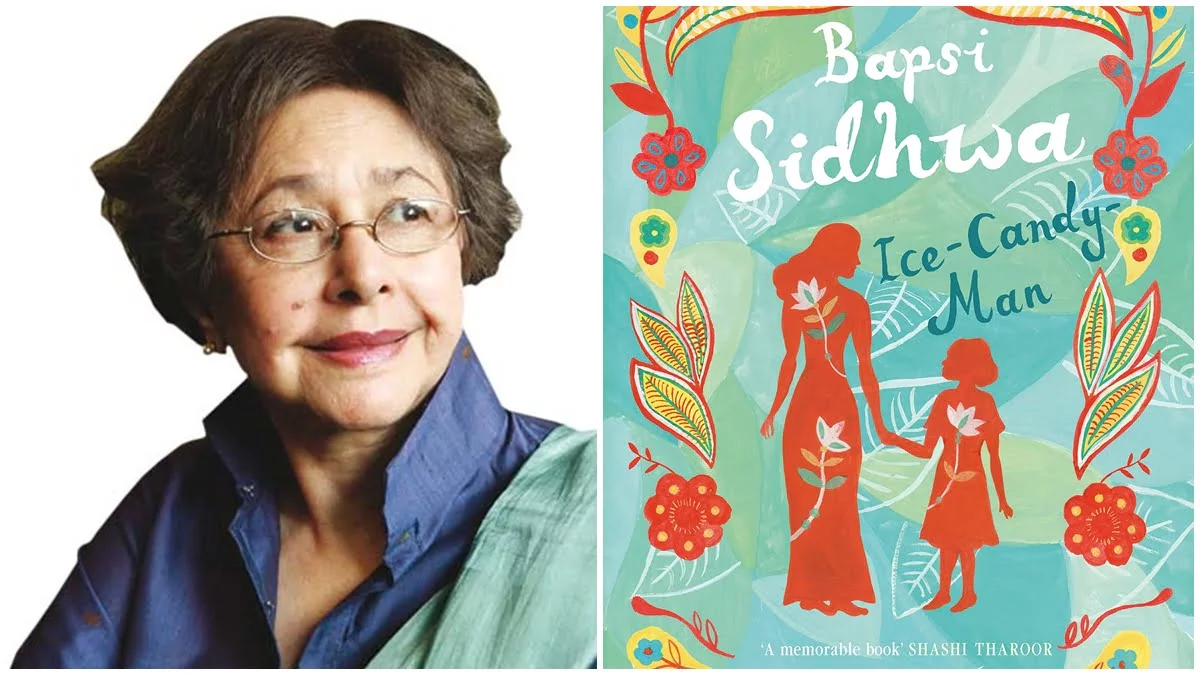Bapsi Sidhwa’s Ice-Candy Man (1988) published in the US as Cracking India (1991) is a seminal work in Partition Literature. However, it is not in terms of articulating the gigantism of the unfortunate event that unfolded in the year 1947, but more so in its deft handling of the nuances that riddled it.
Sidhwa’s Ice-Candy Man takes on a gynocentric view of the communal violence that jolted the subcontinent in 1947. Even with that label, her novel is highly graded, with layers and layers of subjects that opposed and overlapped each other.
Bapsi Sidhwa’s Ice-Candy Man (1988) published in the US as Cracking India (1991) is a seminal work in Partition Literature. However, it is not in terms of articulating the gigantism of the unfortunate event that unfolded in the year 1947, but more so in its deft handling of the nuances that riddled it.
Sidhwa’s Ice-Candy Man takes on a gynocentric view of the communal violence that jolted the subcontinent in 1947. Even with that label, her novel is highly graded, with layers and layers of subjects that opposed and overlapped each other.
The Merging of Two Spaces: The Home and The Nation, The Setting and The Subject
Lenny Sethi is Bapsi Sidhwa’s odd protagonist who is four years old at the beginning of the novel. For the polio-stricken narrator, belonging to a well-off Parsee family in Lahore, the novel takes the shape of a coming of age story—tethered to which, is the geopolitics of the subcontinent. However, this was no mindless connection. The link between the setting and the subject was pivotal to the narrative the novel ought to send out. Thus, the odd narrator, a Parsee household, and the people related to ‘Lame Lenny’ were all a part of Sidhwa’s well-thought-out cobweb.
The discourse around Partition, and subsequently, the literature associated with it, has predominantly been masculine, in its production as well as in its outcome. To dig through the layering, Bapsi Sidhwa knew she had to turn to a single thread binding all hierarchies of oppression. And if there could be anything common between an average South-Asian household and an entire subcontinent teeming with diversity, it was the dominance of one gender over all others. Thus, the author chose two territories, vastly different in terms of geography, but which mirrored common oppression.
Also read: Book Review: Loki Takes Guard By Menaka Raman
Through Lenny, she tells the story of the communal hatred that sundered Hindustan, of gendered violence—at a national level, and a domestic level, of the diminishing female agency in a polarised atmosphere, and of women being victims in the vanguard of any violent development.
From a young age, Lenny was exposed to the brewing anti-colonial feelings of her countrymen, to their desperation for freedom, to the language of violence that called for war between children of one land, which called for division—of land, and faith, and hearts.
Overlapped with this narrative, was Lenny’s exposure to the world of predatory desires. This is done through Shanta, her Hindu Ayah, who is a central character in Bapsi Sidhwa’s novel.
“Up and down, they look at her. Stub-handed twisted beggars…..Holy men, masked in piety, shove aside their pretences to ogle her with lust..” describes Lenny, she adds “Everything about her is eighteen years old and round and plump.”
Owing to her ravishing looks and ‘chocolate chemistry,’ there were many that Ayah could count as admirers. The characteristic that stood out was the varied nature of her suitors. Ayah’s magnetism enraptured the Muslim Ice-Candy Man, the Masseur, Sharbat Khan, a Sikh Sher Singh. And their friendly meetings in the park opposite the Assembly Chambers were immune to the political developments in the subcontinent. Ayah’s charm became the binding force. Many scholars have taken the liberty to suggest that Ayah was a metaphor for a united Hindustan, and all her trials and tribulations were suggestive of the violence a divided Hindustan bore.
But Sidhwa’s Ayah, despite all the symbolism, was more human than anything. Although, Ayah possessed much sexual agency, and actively engaged and explored her desires in ways that would be deemed unchaste by society. Despite her vocal disapproval, she was the subject of repeated harassment and intrusive behaviour of the Ice-Candy Man, who later abducts her, forcing her into prostitution. Lenny observes this with regards the behaviour of her Cousin, who consistently tries to indulge her in carnal abuse. Ice-Candy Man’s toes and her Cousin’s marbles, all blend into a single picture of abuse, that begins right from childhood. Lenny speaks, upon Ayah’s refusal to the forced offering of a coin by the Ice-Candy Man, “She is like me. There are things she would not hold.”
When the events of 1947 unfolded, the fear within men was simple—they would be killed. Women, however, were subjects of double marginalisation—they would be raped, and then killed. Bapsi Sidhwa meticulously traces back to the root of sexual dominance, which easily made way for men to violate and abuse women. Through her literary scalpel, Bapsi Sidhwa dissects the physical and sexual power-play that begins at a domestic level, with men having the upper hand. The avenue of the abuse and the agency of the abuser only increase, and not diminish, in the face of violent upheavals, like that of 1947.
Also read: Analysing Television Serials Through The Feminist Lens Of Simone De Beauvoir
Not Token Victims: Sidhwa’s Women
While Sidhwa adeptly handles the narrative about abuse, she does not write women as token victims. Her women are outspoken, self-assured, vocal, but still not out of touch with an ugly reality.
For instance, Lenny’s influential Godmother is a matriarch with reputation and power. Her identity exists in isolation from a man, which is a characteristic that stands out. Her old husband, who is left unnamed, remains a pitiable and nominal figure throughout the novel. It is Rodabai (Godmother) who restores Ayah to her home in Amritsar, post her abduction by the Ice-Candy Man. Bapsi Sidhwa could also be slightly hinting at class difference with the character of Slavesister, whose sole responsibility is to serve Godmother. And who would often engage in banters with Rodabai.
Mrs Sethi, Lenny’s mother, is another of Bapsi Sidhwa’s powerful characters. She, for the major part of the novel, was portrayed as a dutiful wife of a responsible but emotionally unavailable husband. Later, she turns to become an activist and restore the ‘fallen women,’ or women whose families refused to take them back after they were kidnapped. Bapsi Sidhwa’s capability to command nuances is displayed when Mrs Sethi expresses anger at her husband for having another affair and is hit by him.
Mrs Sethi, Lenny’s mother, is another of Bapsi Sidhwa’s powerful characters. She, for the major part of the novel, was portrayed as a dutiful wife of a responsible but emotionally unavailable husband. Later, she turns to become an activist and restore the ‘fallen women,’ or women whose families refused to take them back after they were kidnapped. Bapsi Sidhwa’s capability to command nuances is displayed when Mrs Sethi expresses anger at her husband for having another affair and is hit by him.
On the surface, the characters in the novel Ice-Candy Man seem like ordinary people, who later get caught in the chaos of a major event. But, a closer look would reveal that their brilliance lies in their very ordinariness. Sidhwa’s story is haunting, in some other sense. Her story is human enough to be felt beneath your fingertips. A part of it might be history, of an unfortunate event that once happened. But a part of it feels like a truth, which is still just as fresh—it lives in Lenny, a lame, skinny girl who is sexually abused and is told that she would never get married. In Ayah, who is subjected to masculine lust, who is violated, again and again. In Papoo, the child bride who is drugged and married. In Mrs Sethi, who despite her activism, cannot fight the violence institutions like marriage bestow upon women. In Hamida. In all the fallen women. In the women.
Tasneem Khan is a writer from Lucknow, India. She is a student of History at St. Stephen’s College, University of Delhi. You can find her on Instagram, Twitter and Linktree.




